The print world was tipped on its axis in the mid 90s when digital offered a welcome alternative to traditional methods. Technological advancement has improved its output tenfold and by extension heightened its appeal. Nevertheless, there remains a good deal of uncertainty about the process itself.
To better explain large format digital Evans Graphics have compiled a definitive list of FAQs. If, after reading this post, you remain unsure on any aspect of the practice do not hesitate to contact us.

What is Digital Printing?
A process by which printing is controlled by computers. Electronic files are replicated using dots and colours to produce an image using either toner or ink. Unlike Litho print there is no need for printing plates and unlike screen print screens and lengthy sets ups are not required.
When did Digital Printing come into effect?
As recently as 1993, 600 years after the first recorded examples of print. Indigo launched their now legendary E-Print 1000, a device capable of printing directly from a computer file. This is credited with revolutionising an industry which has never looked back.
What does DPI mean?
DPI stands for dots per inch and is a quality measurement for print work. 300 dpi is the accepted standard for printed materials. Dipping below 200 dpi will almost certainly result in diminished quality.
How long does digital printing take?
One of the real appeals of digital print is the fact it offers a quick turnaround. Unlike other forms of print there is no need for additional set up processes, an inclusion which can delay any job. Overall less time is dedicated to the pre-press set-up while the aftermath also flows faster. Indeed cutting, folding and more can be started almost immediately as the inks dry immediately.
Is Digital Print a hands-on process?
Not really... Digital is for all intents and purposes non-contact. All designs and images are produced courtesy of ink jet nozzles, these are governed by a computer. Once instructed said nozzles spray the requisite amount of ink onto the designated area of substrate. So, while clients may be heavily involved in the design process the physical creation of their work is taken care of for them.
Is Digital Print good for short or long runs?
Digital printing is typically associated with short runs. One of the processes clear advantages is the absence of any real set-up, meaning trial runs or sampling can be overseen at little cost or effort. Indeed Evans Graphics in particular welcome the opportunity to print a single sample for review before committing to any mass order.
Depending on the project and material quantities range between 1 and 500 are ideally suited to digital, which is naturally utilised for any on-demand service. Anything more will see costs rise.
What can be printed Digitally?
Any manner of materials. Think billboards, posters, PVC banners, hoarding displays, building wraps, interior graphics like wallpaper, vinyl’s and display boards as well as acrylics can even be realised this way.
What is the difference between CMYK and RGB?
CMYK refers to a selection of colours; they being Cyan, Magenta, Yellow and Black. Combinations of this quartet create a full colour palette. Magenta and yellow for instance will bring about red.
RGB meanwhile relates to Red, Green and Blue – the colours of light a computer screen blends in order to form colours upon it.
Can Digital Print replicate colours exactly?
Nearly but not quite. Colours can be matched with precision however in instances where more specific pantones are required end users should be mindful that vibrant greens and oranges will not be exact. This pair are better realised using offset methods, which guarantee an identical match-up.
Can special print effects be achieved digitally?
Yes. The quality of the printer will obviously influence what can and cannot be rolled out but modern machinery will allow for the likes of white and UV red invisible inks alike.
Clear varnish and gloss effects meanwhile are now commonplace, along with an emboss effect invaluable for the likes of certificates. You can learn more about digital printing effects by watching this video.
What is a bleed?
A bleed refers to ink that exceeds the trim edge of a page. Why? To ensure it extends the edge of the page after trimming. Clients are encouraged to build in 3mm worth of bleed on all edges given that digital printing involves a fair amount of movement.
Is Digital Printing good for the environment?
Better than most traditional methods certainly.
Does Digital Printing allow for flexibility?
Absolutely, all because of what is termed Variable Data. Being computers control the entire process it is far easier to change the content whilst an item is actually being printed. Customisation at this stage is now commonplace.
How much does it cost?
Any outlay is obviously dependent on the machinery deployed however digital is celebrated for being considerably cheaper than the likes of offset. Basic black and white outputs in particular are low cost whilst the absence of any set-up and plate expense mean your overall outlay should remain fairly modest.



